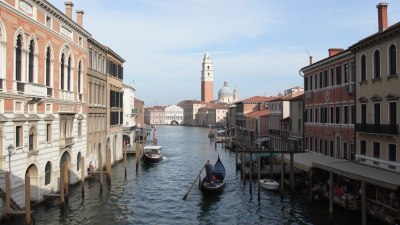The Best Time of Year to Visit Europe (And When to Avoid It)
Picking the perfect season can make or break your European adventure—here’s when to go and when to skip.

Image by dorada000001 on Freepik
Europe is an incredible travel destination year-round, but not every season is created equal. Some months bring perfect weather, fewer crowds, and cheaper prices, while others mean sky-high costs and overwhelming tourist mobs. So, when is the best time to visit Europe? And more importantly, when should you avoid it altogether? Here’s the breakdown by season.
Spring (March – May): The Sweet Spot for Mild Weather and Fewer Crowds
Why visit in spring?
Spring in Europe is like watching the continent wake up. Flowers bloom, outdoor cafés fill with locals, and the weather is mild but pleasant. It’s one of the best times to explore cities without overheating or shivering.
Pros:
- Fewer tourists compared to summer.
- Pleasant temperatures for walking and sightseeing.
- Airfare and accommodations are often cheaper than peak season.
- Stunning spring festivals, like the Tulip Festival in the Netherlands.
Cons:
- Weather can be unpredictable (rain is common in April).
- Some attractions have limited hours before summer season starts.
Best places to visit in spring:
- The Netherlands (for tulip season).
- Italy (before the summer crowds take over).
- Spain & Portugal (warm but not scorching hot).
- France (Paris in the spring is truly magical).
Summer (June – August): Beautiful but Packed (And Expensive!)
Why visit in summer?
Summer in Europe is warm, vibrant, and full of life. This is when beach destinations like Greece, Italy, and Spain truly shine. But it’s also when Europe sees its highest tourist numbers, meaning bigger crowds and higher prices.
Pros:
- Best weather for beach vacations.
- Long daylight hours—perfect for sightseeing.
- Lots of festivals and outdoor events.
Cons:
- Overcrowding in popular cities like Paris, Rome, and Barcelona.
- Expensive flights and accommodations.
- Scorching temperatures in Southern Europe.
- Waiting in long lines for attractions.
Best places to visit in summer:
- The Greek Islands (perfect beach weather).
- Switzerland (amazing for hiking and escaping the heat).
- Scandinavia (long days and milder temperatures).
- The UK & Ireland (warmer weather but still green and lush).
When to avoid:
If you’re looking for a quiet, affordable trip, avoid July and August, especially in major tourist hubs like Italy, France, and Spain. Beach destinations are crowded and expensive, and cities can feel unbearably hot.
Fall (September – November): Fewer Crowds and Stunning Scenery
Why visit in fall?
Fall is arguably the best time to visit Europe. The summer rush is over, but the weather is still comfortable. Prices start to drop, and the autumn colors create a picturesque backdrop for travel.
Pros:
- Fewer tourists, making popular spots more enjoyable.
- More affordable flights and hotels.
- Mild temperatures—great for sightseeing.
- Gorgeous fall foliage in places like Germany and Austria.
Cons:
- Shorter daylight hours by November.
- Some summer attractions may start closing.
Best places to visit in fall:
- Germany (Oktoberfest in Munich).
- France (Burgundy and Bordeaux for wine season).
- Austria & Switzerland (golden autumn landscapes).
- Italy (perfect for sightseeing without the summer chaos).
Winter (December – February): Magical or Miserable? It Depends
Why visit in winter?
Winter in Europe is a tale of two extremes. If you love Christmas markets, snowy landscapes, and cozy cafés, this is a dream season. But if you hate cold weather and gray skies, winter can feel bleak, especially in northern Europe.
Pros:
- Cheapest time for flights and hotels (except Christmas).
- Europe’s Christmas markets are magical.
- Great for winter sports in the Alps.
- Fewer tourists at major attractions.
Cons:
- Short daylight hours (it gets dark by 4-5 PM in many places).
- Some smaller towns and attractions close for the season.
- Cold, damp weather in much of Western and Northern Europe.
Best places to visit in winter:
- Germany & Austria (best Christmas markets).
- Switzerland & France (amazing skiing in the Alps).
- Lapland, Finland (for a magical Arctic adventure).
- Southern Spain, Portugal, and the Canary Islands (mild weather).
When to avoid:
If you dislike the cold, avoid Northern Europe in January and February. These months can be dark, rainy, and not ideal for sightseeing.
When Is the Best Time to Visit Europe?
For most travelers, spring (April – May) and fall (September – October) offer the best balance of good weather, fewer crowds, and reasonable prices. If you want to experience Europe in its most magical state, visit during December for Christmas markets or July for beach destinations—just be prepared for the crowds and costs.
Whatever season you choose, Europe always has something incredible to offer. The key is finding the perfect timing for your travel style.











